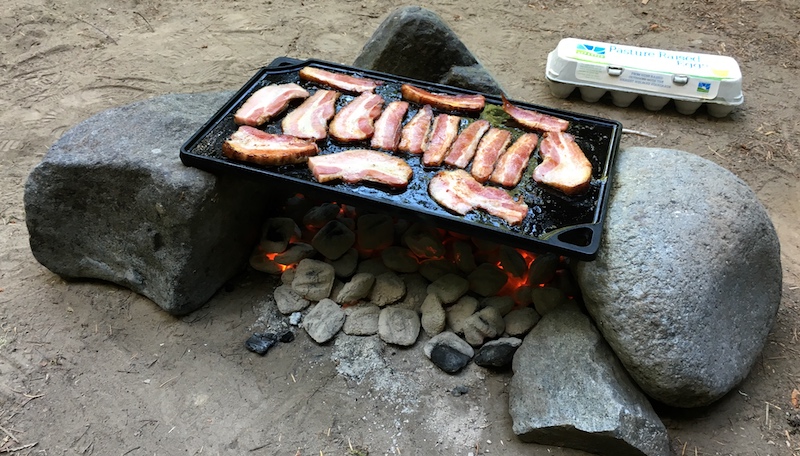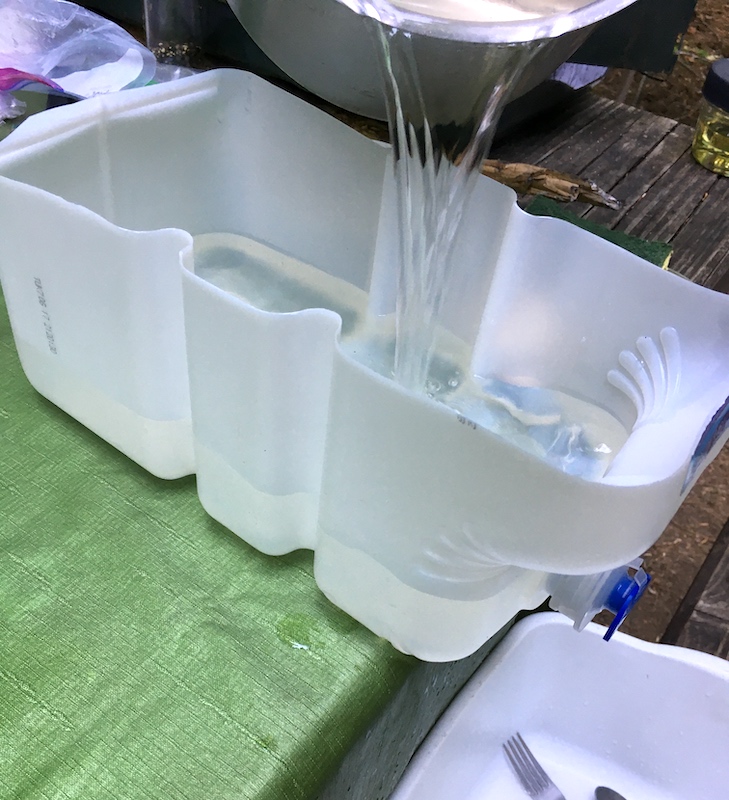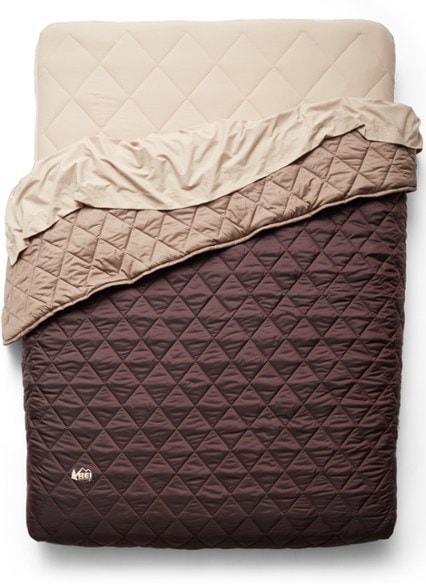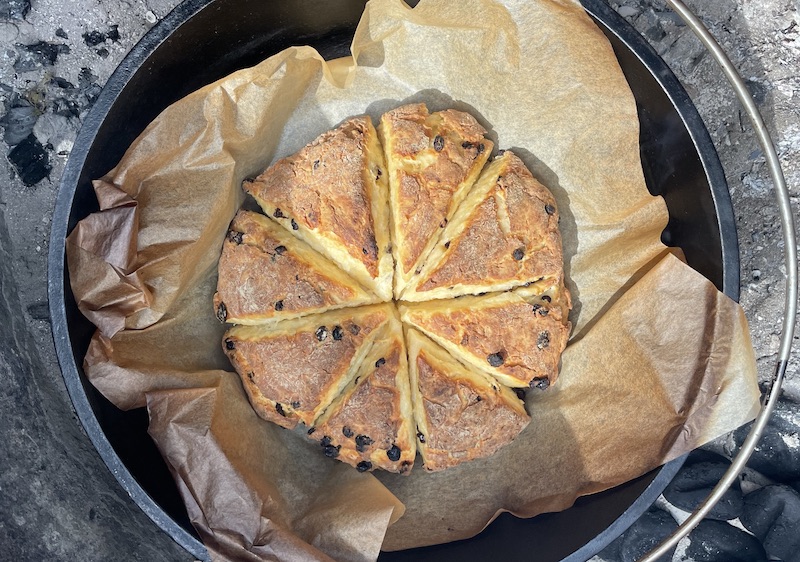
Camp Stories: Camping Gear and Best Hacks, Part 2
We just got back from our annual Fourth of July camping trip—the better to avoid the erstwhile war zone that our neighborhood becomes every year—and we came back with some new hacks and gear suggestions to add to your list.

In the first post in this series I shared our best hacks collected over decades of car camping, from staples like a folding camp table and lidded bins to a hatchet and leather fireplace gloves. Hacks included a zip line to keep pets contained and a brilliant hot water dispenser (left) that Dave made from a three-gallon water jug, among others.
With an eye to cost, efficiency and space considerations, here are our latest must-haves:
Gear
Bedding: We recently traded in our double sleeping bag and blowup mattress for a "sleep system" from REI that included a blowup queen-sized mattress, a padded bottom sheet and fitted top sheet with a comforter that fits over the whole bed. Benefits include more room for Dave's 6'4" frame, the secure fit of the sheets and comforter that prevents it from slipping off the mattress (a problem with all the double bags we've ever had), not having zippers to fumble with in the dark when one person hears the call of nature, and the compact bag that contains it all, making packing simpler. Downside: If the temperature outside dips too close to the system's lower temperature range, you might find yourself sleeping fully clothed.

Several camping couples of our acquaintance have switched to cots with pads and sleeping bags because they are easier to get in and out of, particularly for older knees and backs—one couple uses ergonomic lounge chairs because they can adjust the head end to their preferred angle. Cots also provide storage room underneath for luggage, dog beds, etc.; downside is that they are generally bulkier than a mattress and bedding.
Tent light: One small piece of equipment that stays packed with our camping gear is a small battery-operated lantern with a clip handle. Most tents have a loop or tab to clip it to, and it's invaluable when we want to put the dogs to bed so we can enjoy a few quiet moments by the fire, not to mention it helps in finding your jammies in the bottom of your bag at bedtime.
Headlamp: Okay, kind of obvious, but we resisted these for years for some reason—they still look ridiculous—but now we can't do without them.
Tablecloth: I nearly had a panic attack on our last camping trip when I thought I'd forgotten the ancient camping tablecloth I'd inherited from my parents' camp kit. The heavy duty, easy-to-clean plastic top and non-skid cloth backing still has the small-ish slash I put in it when, as a youngster, I forgot to use a cutting board. It keeps grimy schmutz off prep surfaces and tableware and makes cleanup so much easier.
Hacks
Hot water dispenser: Rinsing dishes and washing your hands is so much easier with this hack (photo, upper left) that I described in my last post, but it's so brilliant I have to share it again. All you need is an empty water jug with a spigot—we always take along three-gallon plastic jugs for drinking water, which goes really quickly between us and the dogs. Slice off the top third (or leave the back end attached so it acts as a hinge), then pour in hot (but not boiling) water and position it over your wash tub. Voilà! Lovely hot water on demand.

breakfast, anyone?
Cooking (and baking) with briquets: Dave loves to bake any time and any place, and he has hacked a working stove from rocks and briquets (top photo), and he also uses briquets to heat and bake with his footed cast iron baking pot (left)—the rimmed lid holds hot briquets to provide heat from the top.
Cooking fires: A hatchet, rather than an axe, should be sufficient for splitting camp wood; and bring newspaper for starting fires. If you need shorter pieces of kindling for starting a fire, you can use the heavy bars of the top grate of the firepit to break longer pieces of kindling in half by inserting it between the bars of the grate and levering it down. If you need a quick bed of coals for cooking, using smaller pieces of wood rather than larger ones will speed up the process.
Freezer chest: Over the years I've found one of the most challenging parts of camping is freezer chest management. Keeping cold things cold and not swimming in melted ice is a challenge, especially now that we feed the dogs raw food, which can't come in contact with the other contents of the chest. (A separate chest is a non-starter for space and hassle reasons.) First, the chest should be placed on a slight slant where any moisture can run out of the drain at the bottom end. Then the ice, usually two bags, goes in the bottom of the chest at the lower end. All foodstuffs are in plastic zip-lock bags by category—meats, vegetables, fruit that requires refrigeration, eggs, cheeses, etc. The cartons of raw pet food—in a separate bag as well—are placed at the drain end of the chest so any leaks go out the drain without contaminating other contents (bring extra bags in case of leaks). Milk, mayonnaise, etc., that needs to stay cold are placed closest to the ice, and vegetables, bread, and other items that don't need to be icy cold can be placed further away.
